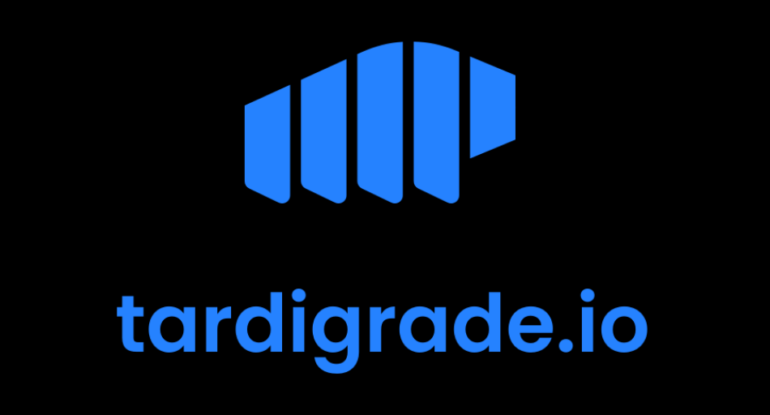Is Blockchain-Based Tardigrade Cheaper Than Amazon’s AWS?

A cloud storage service initially declared in 2015 that makes use of the decentralized, peer-to-peer architecture of blockchain technology to record encrypted information on the computers of users across the world has disclosed its pricing model and launch date.
Storj Labs initially launched the Tardigrade Decentralized Cloud Storage Service in August. Storj Labs serves beta storage service for businesses, developers, and customers. Today, it has announced its ‘Beta 2’ release and pricing, aiming for Amazon’s ‘AWS S3’ cloud service, which is a more profitable and resilient approach.
The Tardigrade storage service claimed 99.97% availability and stated that its prices are lower than the costs of traditional cloud storage providers. Amazon S3 list prices are present $23 per terabyte for static storage per month. It also claims uptimes that range from 95% to 99%.
“Among the three main suppliers, the prices average at $99 per terabyte for bandwidth and $22 per terabyte for static storage,” Storj Labs stated in a blog post.
“Additionally, the prices cited by traditional suppliers often exclude features like encryption and multi-zone redundancy, which comes basic with ‘Tardigrade’ with no extra cost.”
Storj Lab’s Tardigrade storage service beta presently has around 400 active users. Users who lease out space on their hard drives earn ‘Storjcoin X’ (i.e.SJCX), a sort of currency that can help to purchase capacity on Storj’s ‘Driveshare’ service.
The users earn Storjcoin X by selling extra space with ‘DriveShare’ or use it to buy space on the Storj Metadisk network through the company’s file-sharing application. Storj is not at all alone. ‘P2P’ compute services have expanded over the past years to add a half dozen options.
The Tardigrade service charges $10 per terabyte per month, or one cent per gigabyte, for static storage and $45 per terabyte, or 45 cents per gigabyte, of download bandwidth, used. Storj does not charge for upload bandwidth.
“If you choose to take information out, then we charge below our costs to get that information out,” said John Gleeson, Storj’s vice president of Operations. “We don’t wish to charge if you wish to take your stored information out.”
Storj Labs uses blockchain technology to manage a storage aggregator. It rewards users who rent out excess or unused storage on their computers with cryptocurrency, with free storage & network capacity.
It uses what it calls ‘gates’ or ‘performance metrics’ to record its service level agreements. Performance metrics include the total number of vetted storage nodes, which is presently about 3,000, the number of active Tardigrade users which currently is about 400, and node churn, that opt-out and the P2P architecture over time, i.e., about 1.5% p.m.
The Tardigrade Cloud Service currently operates between 4.3 and 7 petabytes of storage capacity. At the production launch in January, it intends to have six petabytes available for users and developers.
“The Tardigrade Cloud Service fragments a file into 30 pieces stored at 80 drives from a pool of three thousand distributed among 183 different countries or territories”, Ben Golub, CEO of Storj Labs, said.
“This is blockchain at its best; honestly, peer-to-peer networks where the underutilized servers are traded,” Avivah Litan, Gartner vice president of research, remarked in an interview.
“It’s like Uber for computers on the blockchain, the design excludes the Uber-like central authority and operator and reinstates it with smart contracts in a system where no entity is in control.”
The storage service operates by first encrypting a file and then fragmenting that file and broadcasting it across eighty or more user drives for repetition. If one part of a global network is slow or not maintaining the standard for downloads or uploads, the service automatically selects different routes with higher bandwidth.
“This is exactly where the power of being decentralized matters. When we are trying to serve you a file you recorded, we need to get 30 pieces to you, but we can get these 30 pieces from any of 80 or more drives that consist of those pieces,” Golub said. “If one of them is occupied or is on a slow network, it doesn’t matter because we’re able to benefit from the fact that we are decentralized and can maintain high availability, durability, and performance.”
If more than a thousand users want to view a file stored on the Tardigrade Cloud Service, then it can be divided up into 200 or 300 pieces by using dynamic caching. It can then be dispersed in a broader global pattern.
“So, if what you require is to store with us this powerful video, we can enhance the dispersion for more effective access,” Golub said. “Originally, we make our best guess as to where to save files, so that they’re adequately scattered on nodes across various networks. Then we can apply algorithms based on usage patterns.”
Developers can enter a waitlist to check out the platform and use Tardigrade’s ‘Amazon S3 gateway’ to start using it with existing S3 cooperative applications. The site has a native library with various popular bindings, including Go, Swift, Python, .Net, Android, and Node.js. for users who want to take benefit of advanced features such as ‘Macaroons.’
Users can upload files through Storj’s ‘IPFS gateway.’ Non-developers can still take advantage by signing up on Storj’s website and getting an authorization token to operate a storage node.
The node will remain in a probationary status for the initial 30 days as the company will measure performance for response time and uptime. Over the first nine months, Storj will also hold back a portion of a node operator’s profits until they have been thoroughly vetted to become a regular part of the network.
Add a comment
You must be logged in to post a comment.




























































